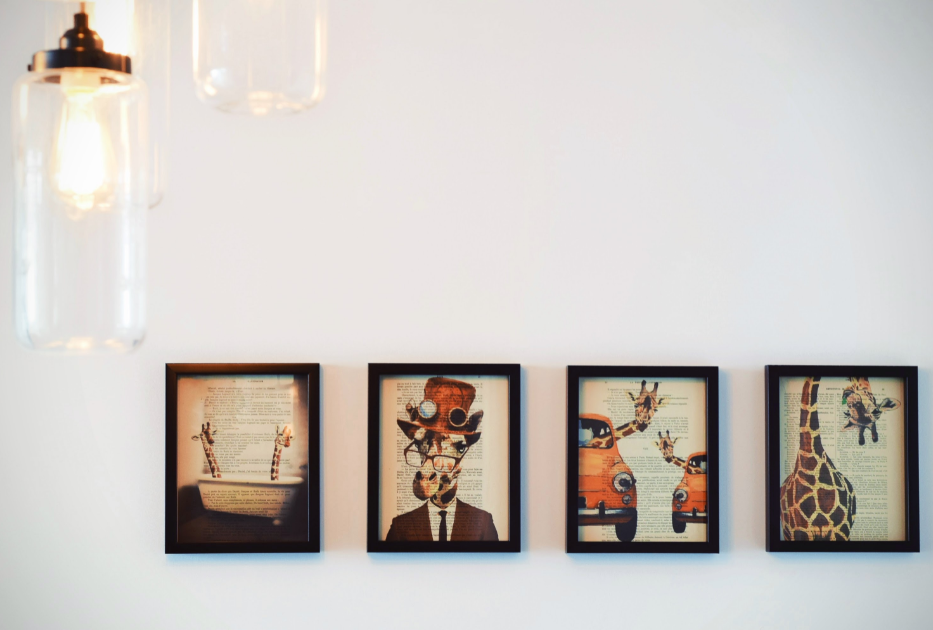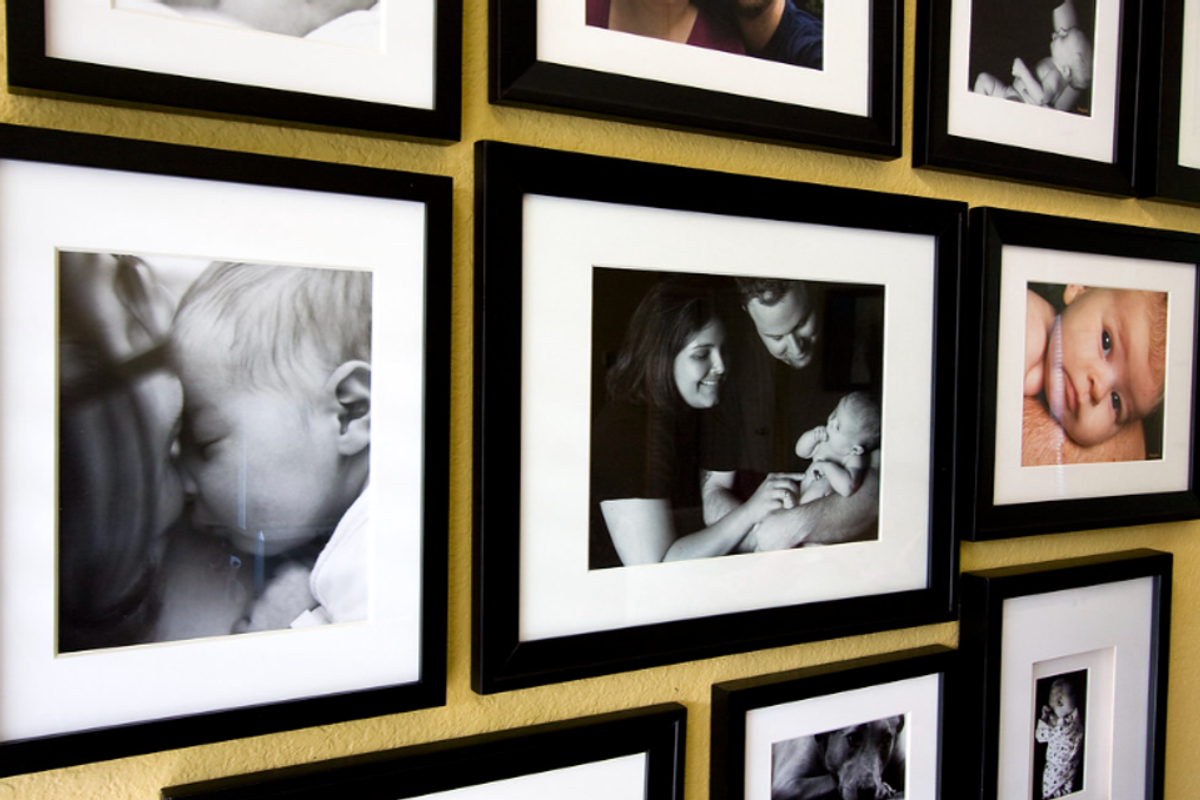Interior designer says having family photo 'shrines' in your house is tacky
Is it poor taste to have family photos in the living room?
A collage of family photos.
In early 2024, Shannyn Weiler, a Utah-based interior designer, sparked quite a debate on TikTok after urging people to exercise caution when displaying family photos in their homes. The discussion started a debate over whether a home should be decorated for visitors or the family itself, and if having a “shrine” dedicated to family members is tasteful.
The video began with a stitch from a designer passionately saying that one should “never" display “personal photos” in the living room. “So family photos can become a problem when they become what I refer to as 'the shrine,'” Weiler begins the video. She shared an example from her life to illustrate why family photos should be hung judiciously.
“I got married when I was 21,” she shares. “We were both in school, absolutely broke, we had $50 to buy a couch, so imagine what type of couch that was. We went to go decorate our first apartment and lo and behold, there’s no money for decoration. So we do what most newlyweds do, we use our wedding photos, because we’re so cute and we’re so in love and we just love our wedding day. Everywhere in our apartment was wedding photos…it felt like what I call ‘the shrine.’”
“It’s very real. This also happens if you have one baby, and you might have baby photos taken and it’s the shrine to the one kid,” she continues. “This also happens if you have one grandkid."
@shannynweiler Interior design art tips Art decor interior design Interior design 2024 art prints Interior design art trends 2024 interior design trends #hometips #homedecor #wallart #decortips #walldecor #interiordesign
Weiler believes that people should hang artwork or photography about more than one subject. “They can’t just be on every wall with one subject,” she says. “We need to mix it up. There needs to be a mirror in the space. We need some Etsy art prints or something like that. We just need to mix it together to get rid of that shrine feel.”
The post bothered many who love having pictures of their family around the house. The vast majority of commenters were people who love having family photos strewn about their homes. "The house is for us not company," Sarah Murdock, the most popular commenter, wrote. "I’d rather have pics of my kids and our life up than prints of random flowers and art," another added.
"I grew up in an interior design magazine and HATED that my mom never displayed any photos of my family. Felt like she cared more about material things," someone wrote.

Others noted that people decorate their homes for themselves, not for guests. "OR we do what we want with the homes WE live in, not guests," someone wrote. "I like myself, I don't have a problem seeing myself everywhere. After all, I paid the bills," another added.
Some people agreed with the interior decorator and said that having too many family photos in a house looks tacky.
"YES. Photographs of ourselves in my own house feel so weird to me. Narcissistic kind of," one wrote.
"I don't have a single photo of a person in my house. I think they look tacky," another agreed.
"One friend's house comes to mind for me, it was tacky (for me) to see nothing but wedding pics. Like, do you have other interests? Just my opinion but also, they’re divorced now. Mixing in art helps," someone else added.

Even though the post received a pretty sizable backlash, Weiler’s opinion is widely accepted in design circles. In a recent article for House Beautiful, writer Lesley Rotchford shares that, "There's an old rule that says you should only hang photos in personal spaces." She then quotes Boston-based interior designer Liz Caan, who shared, "I tend to not hang family photos in public spaces like living rooms, foyers, or dining rooms." Instead, Caan opts for less overt spaces like "a hallway between bedrooms, in a second-floor office, or in the bedroom."
Woman's lifestyle blogger, Joanna Goddard, asked her Cup of Jo readers if iit was tacky to hang family photos in the living room, and she received similar responses to Weiler. Some were passionately for it, while others were passionately against it.
"I have always felt like it was bragging to have family pictures in the 'public' areas of my home. However, in the bedrooms I have nice family pictures. If someone is close enough to me to be in the bedrooms they probably know my family. It certainly isn’t that I’m not proud of each and every one of them, just a pride that I don’t care to display to casual acquaintances," one commenter wrote.
"I think people should be able to have whatever they want in their homes. I have family photos throughout my house and don’t care if it’s trendy or acceptable. My house my choice! Do what you want in your house," another added.
After her thoughts on family photos went viral, Weiler posted a follow-up video where she shared an example of a student changing their mind about home decor.
“Sometimes in design, we hear the design ideas and go, 'Mmm nope, that's not for me.' Sometimes, we try those ideas and we still say, 'Nope, that's not for me.' But occasionally we try things and we go, 'Okay, I do kind of like that,’” Weiler concluded her video.
@shannynweiler reply to @Shannyn #homedecor #interiordesign #hometips #interiordesigntrends2024 #wall art
Of course, at the end of the day, your home is your space and you're allowed to decorate it however you want. Perhaps in this situation (like most in life), the best course of action is moderation. A mix of Etsy art prints and beloved family photos on a gallery wall in the living room or bedroom might be the perfect subtle decor you're looking for.
This article originally appeared last year. It has been updated.

